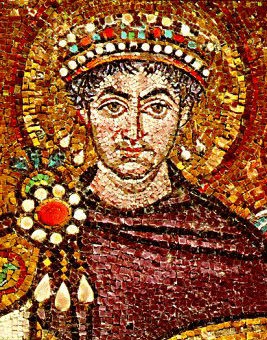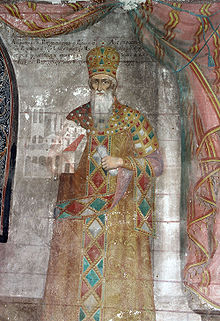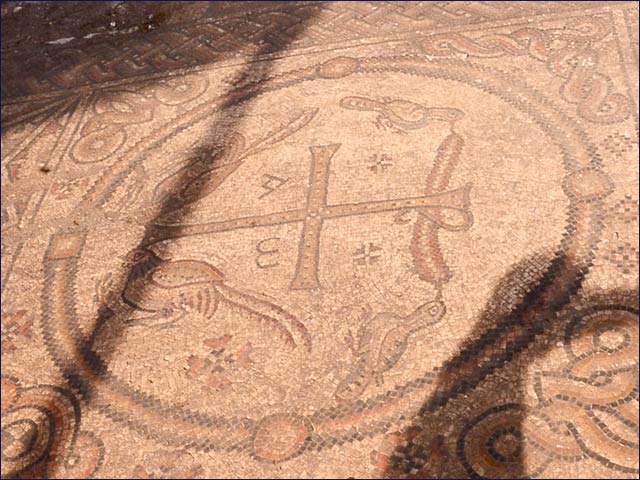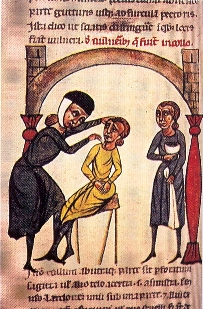The Military Use of the Icon of the Theotokos and its Moral Logic in the Historians of the Ninth-Twelfth Centuries
Starting at least by the late tenth century, Byzantine emperors took icons of the Mother of God with them on campaign. This article examines the appearance of such icons in the narratives of historical texts.
‘Waiting Only for a Pretext’: A New Chronology for the Sixth-Century Byzantine Invasion of Spain
This article argues that the common modern version of the invasion, in which Byzantine forces arrived in 552, fought on the side of the usurper Athanagild until 555, and then fought against Athanagild for a brief period before concluding a treaty with him, is flawed and, relying on a more precise reading of the sources, proposes a new chronology and narrative, in which Byzantine forces did not arrive until 554.
Bright Beginnings: Jewish Christian Relations in the Holy Land, AD 400-700
This paper shows that Christian and Jewish relations in the Holy Land between the fourth and seventh centuries, according to the archaeological evidence, were characterized by peaceful co-existence.
Warfare and propaganda: the portrayal of Andronikos II Palaiologos (1282 – 1328) as an incompetent military leader in the Histories of John VI Kantakouzenos (1347-1354)
The Histories of Kantakouzenos is the main source for the civil war between Andronikos II and Andronikos III which was fought intermittently from 1321 until 1328.
The Man of Sorrows and the King of Glory in Italy, c. 1250 – c. 1350
The Man of Sorrows – an iconographic type of Jesus Christ following his Crucifixion – has received extensive analytical treatment in the art-historical literature.
Maurice, Son of Theodoric: Welsh Kings and the Mediterranean World AD 550-650
Among the many petty rulers of early medieval Wales was a king whose name can be rendered Maurice, son of Theodoric.
The Means of Destruction: How the Ottoman Empire Finally Ended the Byzantine Empire
No European had any reason to believe that the Ottomans would capture Constantinople, since they had tried two times previously and had failed in both of those attempts.
‘Part of our commonwealth’: a study of the Normans in eleventh-century Byzantine historiography
‘Part of our commonwealth’: a study of the Normans in eleventh-century Byzantine historiography Alexander Olson (Simon Fraser University) Simon Fraser University: Faculty of…
The Lost Secret History of Nicetas the Paphlagonian
Although the Secret History of Nicetas the Paphlagonian has failed to reach us in its original form, it has probably shaped our knowledge of Byzantium in the ninth and early tenth centuries more than any surviving text.
Byzantine Church and Mosaic discovered in Israel
Archaeologists working for the Israel Antiquities Authority have uncovered the remains of a 1500 year old Byzantine church south of Tel Aviv. It includes a large mosaic and inscriptions in Greek.
Manuel II Palaeologus in Paris (1400-1402): Theology, Diplomacy, and Politics
The end of the fourteenth century found the Byzantine Empire in a critical state.
Integrative Medicine: Incorporating Medicine and Health into the Canon of Medieval European History
Hitherto peripheral (if not outright ignored) in general medieval historiography, medieval medical history is now a vibrant subdiscipline, one that is rightlyattracting more and more attention from ‘mainstream’ historians and other studentsof cultural history.
Land and Sea Communications, Fourth–Fifteenth Centuries
The principle that the active and coordinated collaboration of nature and man is an essential requirement for the creation of a network of communications is of fundamen- tal importance.
Fireproofing of war machines, ships and garments
Incendiary missiles were in use in antiquity and developed rapidly in the Hellenistic period, and various forms of fire extinguishers were invented to deal with them.
Reading the Ancients: Remnants of Byzantine Controversies in the Greek National Narrative
In the eyes of his contemporaries, as Anna Komnene suggests in her Alexiad, Italos was a pagan wolf in the clothing of a Christian sheep, anxious to overcome Christianity in favour of Hellenic (i.e. pagan) philosophy
Using Ancient Military Handbooks to fight Medieval Battles: Two stratagems used by Alexios I Comnenos against the Normans and the Pechenegs
During the whole of his lengthy reign, Alexios I Comnenos (1081-1118) faced multiple military threats from many different opponents that seriously threatened the cohesion and the existence of the empire.
Book Review: The Walls of Byzantium, by James Heneage
To get through this maze, Heneage employs the time proven and very useful conceit of human interest at its most personal level – a love story, not merely triangular but quadrilateral, plus the ardent love of place…
Ekphrasis in the Alexiad
Ekphrasis in the Alexiad By Niki Touriki Diogenes, Vol. 1 (2014) Introduction: The historical text of the Alexiad written by Anna Komnene in the…
Byzantine medicine, genres, and the ravages of time
Byzantine medicine has never enjoyed an enthusiastic press.
Byzantine Renaissance
Byzantium soon felt like some sort of evil stepmother, locked in the West’s attic, guilty of so many crimes.
The Case of Conjoined Twins in 10th-Century Byzantium
How were these conjoined twins treated, and how did the Byzantine physicians try to separate them?
Theodora, Aetius of Amida, and Procopius: Some Possible Connections
Behind the purported facts of Theodora’s career as a common prostitute and later as empress are the hidden details of what we might call feminine pharmacology: what were the drugs used by prostitutes and call-girls in sixth-century Byzan- tium? Were there ordinary pharmaceuticals employed by such professionals to stay in business?
The last Serbian queen: Helena Palaiologina (1431- 1473)
Serbo-Byzantine marriages had occurred many times in the past years, when the Empire was still vast and powerful.
The Commercial Map of Constantinople
The commercial topography of Constantinople was in part determined by the fact that it was a sea-bound city on seven hills, making access from the port to the forum and other commercial premises a key necessity in urban development.
Medieval Byzantine Magical Amulets and Their Tradition
A diverse yet distinctive group of magical amulets has periodically attracted the attention of scholars from Renaissance times to the present. The amulets take many forms, including engraved gems and cameos, enamel pendants, die-struck bronze tokens, cast or engraved pendants of gold, silver, bronze, and lead, and rings of silver and bronze.























